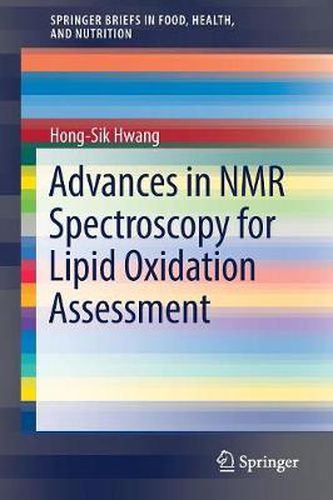Readings Newsletter
Become a Readings Member to make your shopping experience even easier.
Sign in or sign up for free!
You’re not far away from qualifying for FREE standard shipping within Australia
You’ve qualified for FREE standard shipping within Australia
The cart is loading…






This title is printed to order. This book may have been self-published. If so, we cannot guarantee the quality of the content. In the main most books will have gone through the editing process however some may not. We therefore suggest that you be aware of this before ordering this book. If in doubt check either the author or publisher’s details as we are unable to accept any returns unless they are faulty. Please contact us if you have any questions.
This Brief provides a comprehensive overview of NMR spectroscopy, covering techniques such as 1H, 13C, and 31P NMR, which are reliable tools to determine lipid oxidation level, to identify oxidation products, and to elucidate oxidation mechanism. The Brief shows that 1H NMR spectroscopy continually demonstrates reliability, accuracy, convenience, and advantages over conventional analytical methods in determination of the level of oxidation of edible oil during frying and storage through monitoring changes in several proton signals of oil, including olefinic, bisallylic and allylic protons. This modern analytical method is shown within this text to be used to identify oxidation products, including primary oxidation products such as hydroperoxides and conjugated dienes and secondary products such as aldehydes, ketones, epoxides and their derivatives. By identifying intermediates and final oxidation products, many oxidation mechanisms could be elucidated. A relatively newer method, the text demonstrates that 13C NMR and 31P NMR spectroscopy can also provide additional information on the molecular structure of an oxidation product. Backgrounds, principles, and advantages over conventional methods, most recent advances, and future prospects of these methods are discussed.
Advances in NMR Spectroscopy for Lipid Oxidation Assessment begins by covering the various mechanisms of lipid oxidation, including various methods to determine oxidation products. NMR spectroscopy is then covered, including its applications in foods. The next section focuses on 1H NMR Spectroscopy, including its use for assessment of lipid oxidation during oil storage and frying. The following section focuses on 13C NMR spectroscopy, including its use in determining and identifying oxidation products and mechanisms. A final section focuses on 31<
$9.00 standard shipping within Australia
FREE standard shipping within Australia for orders over $100.00
Express & International shipping calculated at checkout
This title is printed to order. This book may have been self-published. If so, we cannot guarantee the quality of the content. In the main most books will have gone through the editing process however some may not. We therefore suggest that you be aware of this before ordering this book. If in doubt check either the author or publisher’s details as we are unable to accept any returns unless they are faulty. Please contact us if you have any questions.
This Brief provides a comprehensive overview of NMR spectroscopy, covering techniques such as 1H, 13C, and 31P NMR, which are reliable tools to determine lipid oxidation level, to identify oxidation products, and to elucidate oxidation mechanism. The Brief shows that 1H NMR spectroscopy continually demonstrates reliability, accuracy, convenience, and advantages over conventional analytical methods in determination of the level of oxidation of edible oil during frying and storage through monitoring changes in several proton signals of oil, including olefinic, bisallylic and allylic protons. This modern analytical method is shown within this text to be used to identify oxidation products, including primary oxidation products such as hydroperoxides and conjugated dienes and secondary products such as aldehydes, ketones, epoxides and their derivatives. By identifying intermediates and final oxidation products, many oxidation mechanisms could be elucidated. A relatively newer method, the text demonstrates that 13C NMR and 31P NMR spectroscopy can also provide additional information on the molecular structure of an oxidation product. Backgrounds, principles, and advantages over conventional methods, most recent advances, and future prospects of these methods are discussed.
Advances in NMR Spectroscopy for Lipid Oxidation Assessment begins by covering the various mechanisms of lipid oxidation, including various methods to determine oxidation products. NMR spectroscopy is then covered, including its applications in foods. The next section focuses on 1H NMR Spectroscopy, including its use for assessment of lipid oxidation during oil storage and frying. The following section focuses on 13C NMR spectroscopy, including its use in determining and identifying oxidation products and mechanisms. A final section focuses on 31<